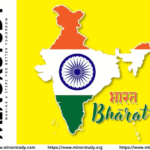🎭 Meena Kumari Ji: History, Facts, Timeline, Significance, Wishing & Enduring Impact on Indian Society
Heart-Touching Reasons Why Meena Kumari’s Tragic Life Still Inspires Generations
🌸 Introduction
Meena Kumari – the name itself evokes nostalgia, grace, and an ocean of emotions. Known as the “Tragedy Queen” of Indian cinema, Meena Kumari Ji was not just an actress, but an embodiment of poetry, pain, and profound emotional depth. Her life was a canvas painted with vibrant success yet drenched in melancholy. Despite the personal turmoil, her contributions to Indian cinema, literature, and culture are unforgettable.
- Heart-Touching Reasons Why Meena Kumari’s Tragic Life Still Inspires Generations
- 🌸 Introduction
- 📜 History of Meena Kumari Ji
- 🧾 Important Facts About Meena Kumari
- 📅 Timeline of Her Life
- 🌟 Significance and Contributions
- 💡 7 Heart-Touching Reasons Why Meena Kumari Still Inspires
- 1. Grace Under Pressure
- 2. Master of Emotion
- 3. Courage in Vulnerability
- 4. Voice of Women’s Pain
- 5. Unmatchable Poetry
- 6. A Cultural Icon
- 7. Legacy That Lives Forever
- 🙏 Wishing the Legend
- 📚 FAQs About Meena Kumari Ji
- 🌍 Importance in Life and Society
- 🎥 Observance and Remembrance
- ✅ Important Points Summary
- ❤️ Conclusion: A Star That Shines in Sadness
Let us explore her life’s timeline, facts, significance, and why she remains a pivotal figure even today.
📜 History of Meena Kumari Ji
🎬 Birth and Early Life
Real Name: Mahjabeen Bano
Born: August 1, 1933, Bombay (now Mumbai), British India
Father: Ali Bux, a theater artist
Mother: Iqbal Begum, a stage actress and singer
Meena Kumari was introduced to cinema at the age of 4 to support her struggling family. Her innocent face, expressive eyes, and mature performances soon captured the hearts of audiences and filmmakers alike.

🚀 Rise to Stardom
Meena Kumari began as “Baby Meena”, acting in mythological films like Leatherface (1939).
Her breakthrough as a heroine came with Baiju Bawra (1952), earning her Filmfare Award for Best Actress.
She became known for her roles in:
Parineeta (1953)
Sahib Bibi Aur Ghulam (1962)
Pakeezah (1972)
Phool Aur Patthar (1966)
Dil Ek Mandir (1963)
She ruled the 1950s and 1960s and became the highest-paid actress of her time.
🧾 Important Facts About Meena Kumari
| Fact | Detail |
|---|---|
| Nickname | Tragedy Queen |
| Awards | 4 Filmfare Awards for Best Actress |
| Writing | A published Urdu poet (pen name: Naaz) |
| Marriage | Married to filmmaker Kamal Amrohi in 1952 |
| Languages | Fluent in Urdu, Hindi, and English |
| Death | March 31, 1972, at age 38 due to liver cirrhosis |
| Iconic Work | Pakeezah – released just weeks before her death |
📅 Timeline of Her Life
| Year | Event |
|---|---|
| 1933 | Born in Bombay |
| 1939 | Started acting at age 4 |
| 1952 | First major hit: Baiju Bawra |
| 1953 | Married Kamal Amrohi |
| 1962 | Acclaimed performance in Sahib Bibi Aur Ghulam |
| 1965 | Alcohol addiction and health issues surface |
| 1972 | Final masterpiece Pakeezah released; died soon after |
🌟 Significance and Contributions
Icon of Feminine Grace: Meena Kumari redefined femininity, blending strength with vulnerability.
Pioneer of Intense Roles: At a time when women were objectified, she played women of substance.
Bridge Between Cinema and Poetry: Her published Urdu poetry added depth to her public image.
Symbol of Silent Suffering: Her tragic personal life resonated with millions facing emotional struggles.
Trendsetter in Fashion and Dialogue Delivery: Her elegant sarees and eloquent Urdu remain timeless.

💡 7 Heart-Touching Reasons Why Meena Kumari Still Inspires
1. Grace Under Pressure
Despite being thrust into acting at a young age to support her family, she handled fame and responsibility with poise.
2. Master of Emotion
Her expressions could move audiences to tears without uttering a word — a mark of rare talent.
3. Courage in Vulnerability
She faced betrayal, loneliness, and heartbreak, yet poured it all into her craft, creating roles that still touch hearts.
4. Voice of Women’s Pain
From Chhoti Bahu in Sahib Bibi Aur Ghulam to Sahibjaan in Pakeezah, she became a symbol of women’s hidden suffering in patriarchal societies.
5. Unmatchable Poetry
She wasn’t just an actress. Her Urdu nazms and ghazals are deeply philosophical, showing her inner world of longing, loss, and love.
6. A Cultural Icon
Her life, though short, became a template for biopics, songs, poetry, and discussions on the female psyche in cinema.
7. Legacy That Lives Forever
Even today, new generations discover her films and are mesmerized by her timeless appeal and emotional depth.
🙏 Wishing the Legend
“Salute to the eternal queen of emotions, Meena Kumari Ji. Your pain became our poetry, your silence our symphony. You will always be alive in every soulful scene, in every heartfelt line, and in every drop of cinematic tear.”
On her birth anniversary (August 1st) and death anniversary (March 31st), fans, poets, and cinephiles across India pay tribute through poetry recitations, film screenings, and social media tributes using hashtags like #MeenaKumariLivesOn and #TragedyQueenForever.
📚 FAQs About Meena Kumari Ji
Q1: Why is Meena Kumari called the “Tragedy Queen”?
Because most of her film roles and her real life were filled with sorrow, betrayal, and emotional pain.
Q2: What is Meena Kumari’s greatest film?
Most critics consider Pakeezah as her magnum opus, both emotionally and artistically.
Q3: Did Meena Kumari write poetry?
Yes, under the pen name Naaz, her Urdu poetry was later published and is admired for its depth.
Q4: Was Meena Kumari successful during her lifetime?
Yes, she was among the highest-paid actresses and critically acclaimed, though she battled personal demons.
Q5: How did Meena Kumari die?
She passed away in 1972 at the age of 38 due to liver cirrhosis caused by prolonged alcohol addiction.
Q6: Is there a museum or memorial for Meena Kumari?
Currently, there is no dedicated museum, but her films, poetry, and interviews serve as living memorials.

🌍 Importance in Life and Society
Mental Health Awareness: Her story sheds light on emotional trauma, depression, and alcoholism—subjects rarely discussed in her era.
Empowerment through Art: Her roles showed that female characters could carry emotional depth and command respect.
Cinematic Inspiration: Generations of actresses and filmmakers have drawn from her nuanced performances.
Cultural Reflection: Her life was a mirror to the rigid social norms that women, especially artists, were subjected to.
🎥 Observance and Remembrance
On her death anniversary, fans:
Watch Pakeezah or Sahib Bibi Aur Ghulam
Share Urdu poetry inspired by her
Light candles or flowers at her grave in Mumbai’s Rehmatabad Cemetery
Film clubs and universities organize:
Seminars on female identity in Indian cinema
Retrospectives of her movies
Readings of her poetry
✅ Important Points Summary
Meena Kumari = Art + Pain + Poetry
Inspired generations despite personal suffering
Icon of female resilience and grace
Left a cultural and cinematic legacy
Remains relevant in feminist and poetic discourse
❤️ Conclusion: A Star That Shines in Sadness
Meena Kumari Ji was not just an actress; she was a storm wrapped in velvet — soft in voice but fierce in impact. Her tragic personal life, artistic brilliance, and poetic soul have immortalized her. In a world often obsessed with perfection and plastic smiles, she showed us the beauty in brokenness. Her legacy is a reminder that even the most fragile souls can leave the strongest impressions.








